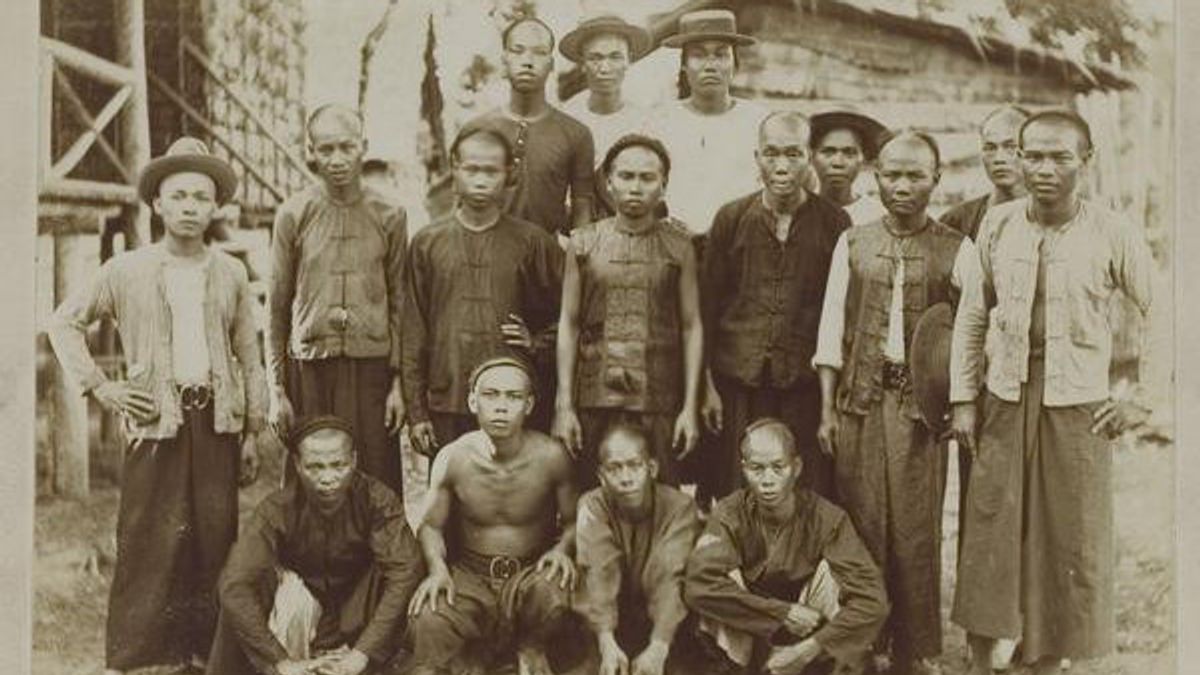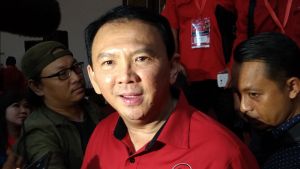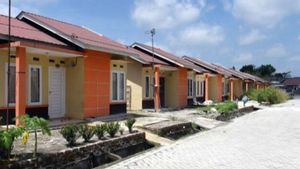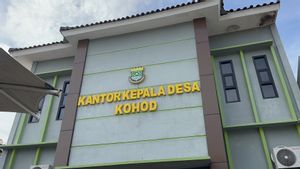JAKARTA - For thousands of years, Chinese ethnic have merged with the archipelago. They are an important part of the nation's life. Not only during the heyday, but also in bad times. Even history records the struggle of the Chinese in the struggle for Indonesian independence. So, the stigma about the contents of the heads of Chinese people which are only "cuan, cuan, and cuan" becomes an interesting discussion. What is the reason for their coming to Indonesia? For money?
The book Society and Culture of Chinese Indonesia by Hidayat Zainal Mutakin explained that the wave of departure of the Chinese from their ancestral lands had occurred for centuries. Most of them are based on economic motives. The densely populated population makes it difficult for Chinese people to find work in their own country, China.
Apart from that, there are also political motives. They do not want to be colonized or governed by other nations in their own land. An example is when the Mongol and Manchu dynasties ruled mainland China in the 12th and 17th centuries. In Indonesia, ethnic Chinese have had a long history. Since their arrival in the past centuries, the Chinese have created many generations across generations.
However, in those days very few Chinese were involved in politics, especially in the realm of the bureaucracy. The way they survive in the end is through trading. Quoting JL Vleming, Jr.'s book entitled Kongsi and Chinese Business Network Speculation, it was explained that the Chinese came in several waves of migration from two provinces in South China.
From Kwangtung Province are the Hakka, Cantonese, and Tiociu people. Another province, Fukien, was filled with waves of migration by Hokkiens, Hokcia, and Hinghua. Their goal is to make a living and a better living. Each of these groups has expertise.
For example, the Hokkien with their trade talents; Hakka people as craftsmen and goldsmiths; and the Tiociu people who were known as planters or silver and tin craftsmen. This condition occurred in several waves, until the group of migrants gave birth to offspring in the archipelago, either through mixed marriage or among ethnic groups.
Great waves of Chinese immigrantsThe opening of plantation and tin land by the Dutch East Indies government in 1860-1890 encouraged more and more Chinese people to settle in the Dutch East Indies territory. In addition, the Dutch East Indies government's policy of easing permits provoked further waves of Chinese immigrants.
By the middle of the 19th century, these immigrants numbered a quarter of a million people. This number continued to increase until 1930, when half a million ethnic Chinese moved to the Dutch East Indies. The growing number of Chinese people then lived in groups in an area which was under the control of the Dutch East Indies government. Usually called Chinatown.
To make it easier to monitor and control, the Dutch East Indies government also appointed a captain for the ethnic Chinese. Selection is based on the candidate's popularity or wealth. In addition, the establishment of various Chinese organizations was also carried out to accommodate all their needs. In the socio-cultural field, they were joined in the Tiong Hoa Hwee Koan (THHK) organization. Meanwhile, in the economic sector, the Siang Hwee organization, a Chinese chamber of commerce (Chineze kamer van koophandel) was founded.
The formation of a chamber of commerce under Dutch East Indies control made it easier for Chinese traders. They are given many permissions. Historian Ong Hok Ham, writing in the February 13, 1978 edition of Tempo entitled The Establishment of Capitalism among Peranakan Chinese in Java explained that Chinese traders were given the authority to collect taxes from their own communities.
They were also allowed to monopolize salt, open pawnshops and trade in opium. This position indirectly placed the ethnic Chinese as an extension of the arms and economic intermediaries for the Dutch East Indies government and the land of the sons. This condition made Chinese traders more dependent on the Dutch East Indies government.

The Chinese traders hoped to continue to occupy the archipelago which they considered profitable. Meanwhile, non-merchant Chinese criticized this attitude. Liem Koen Hian, a figure of the Chinese Indonesian Party organization, published his criticism in the Sin Tit Po newspaper. "We think there are not many peranakan Chinese whose interests are closely related to the Dutch government, so that they are more than the Dutch themselves, wanting the Dutch government to rule here forever."
Dilemma conditions. The dependence of the Chinese in the trade sector actually occurred because they were prohibited from owning agricultural land or becoming government employees. There is no choice but to trade. The book The Formation of a Bureaucratic Elite by Heather Sutherland explains the difficulty of opportunities for ethnic Chinese to enter the government because at that time government employees were only filled with Europeans. From the men's side of the earth, there are only a handful of aristocrats and aristocrats who can occupy this position.
Chinese trade talent
However, trade did bring the Chinese to glory. The political prohibition actually placed Chinese people in an advantageous position. The population census conducted in 1930 proved that the majority of Chinese people in Java were very successful in trading. This condition continued even when Japan entered Indonesia. They remain engines of economic cycles.
Hua Chiao Tsung Hui (HCTH), an organization formed by Japan for peranakan Chinese residents at that time was established to oversee their economic and political activities. The organization also became one of Japan's additional powers in the economic field to provide war funds.
HCTH was also authorized by Japan to collect diamonds, sell lotteries and facilitate trade permits. For news affairs, Japan puts forward news through Hong Po, a media led by Loei Tiang Tjoei who is pro to the Japanese government. But after Japan surrendered unconditionally, the organization for ethnic Chinese formed by Japan was dissolved by the allies.
Entering the early days of Indonesian independence, the social structure of the community drastically reversed. The economy that used to be controlled by many ethnic Chinese slowly began to shift along with the physical revolution. Ethnic Chinese began to be isolated. The residents who had borrowed money from Chinese people didn't even pay anymore. Many Bumi Putra have also taken over the already developed Chinese trading businesses. The business is claimed as proprietary.
Even so, in the midst of the heat of the conflict between Indonesia and the Netherlands during military aggression, some Chinese traders still had time to take advantage by selling contraband and foodstuffs for the Indonesian side. One of them is Lim Sioe Liong or also known as Sudono Salim, a conglomerate in Indonesia whose business is still booming. Indofood, Indosiar, BCA, Indomaret, Indomarco, Indomobil, Indocement and many other companies are still part of the business of the Sudono Salim family.
The English, Chinese, Japanese, Arabic, and French versions are automatically generated by the AI. So there may still be inaccuracies in translating, please always see Indonesian as our main language. (system supported by DigitalSiber.id)










